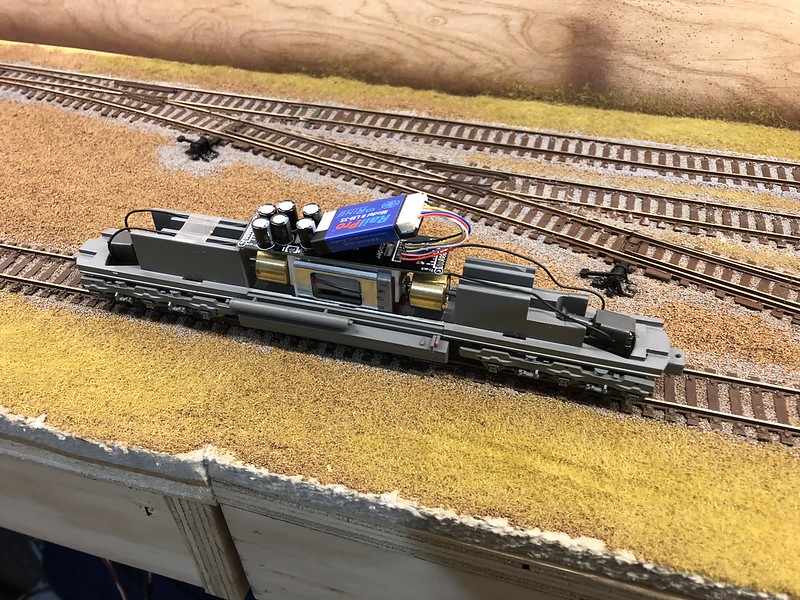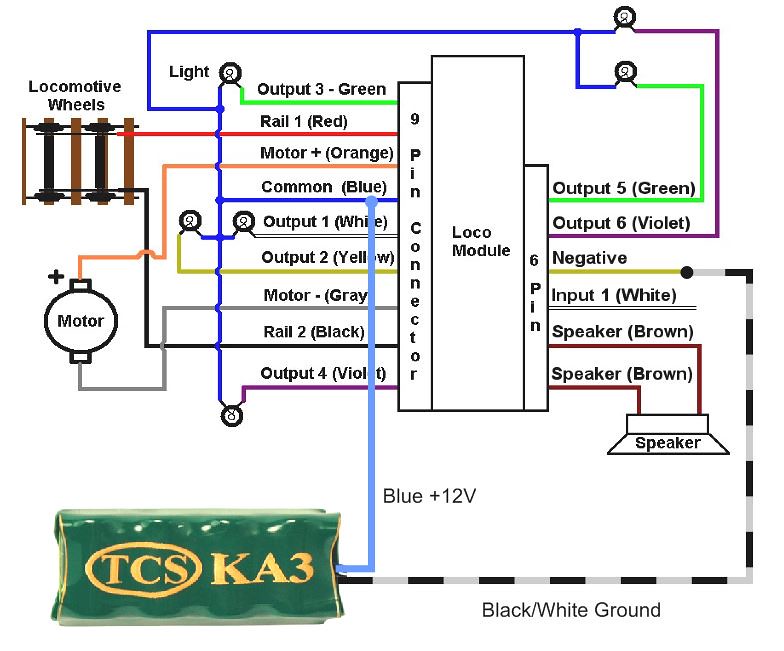I'm working on installing a LM3S and a keep alive into a new to me early Genesis SD70M. The keep alive I am using is integrated into a common electrical board that also handles lighting, etc, however the keep alive is electrically isolated on the board. Last night I set the board up with a 9-pin plug, and installed into the loco drive, without setting up the keep alive function. I set up the motor full load current, and got back a value in the 600 mA range (repeatable). Seemed high, but everything functions, and I was able to run the loco back and forth several times.
Next, I wired in the keep alive to the rest of the board. I followed the diagram attached below. I reran the motor full load current function, and got back 690 mA. I also started having issues with the LM3 cutting out on high motor current (not surprising). Also, I am not seeing an effect from the keep alive. The track voltage did not stay stable, and fluctuated at known low points, and the motor immediately stopped when removed from the track. Didn't get much farther due to being up late enough as it is.
So where I'm at with this. First, being an early genesis model, I have low confidence in the quality of the motor. I have not tried to wire in a different motor, and see how much of a difference it makes. However, I'd expect that adding the keep alive should not affect motor current if it is working properly. Any thoughts?
Board I am using.

Installed into drive.

Wiring diagram for keep alive I'm following.
